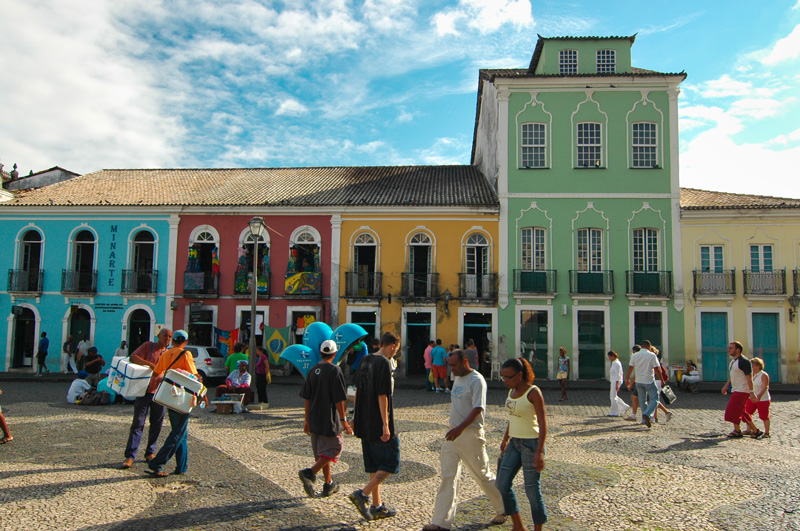
Bahia State, located along Brazil’s Atlantic Coast in the northeastern part of the country, is the 4th-largest Brazilian State by population and the 5th-largest by area. Bahia is also one of the most scenic states known for its traditional Afro-Brazilian culture and gorgeous beaches, which makes it one of the most popular states among locals and foreigners alike.
It is said that the soul of Brazil lies in the state of Bahia, and when you are in the old part of its capital Salvador, listening to the rhythmic beat of Afro-Brazilian drums, you will agree.
Bahia is the country’s pulsating epicentre of Afro-Brazilian culture, and the birthplace of samba dance and music. This is also the area where, at the beginning of the 16th century, enslaved Africans started to practice capoeira, the martial art that combines dance, acrobatics, and music.
The name “Bahia” derives from the earlier captaincy of Bahia de Todos os Santos, named for Bay of All Saints (Baía de Todos os Santos in modern Portuguese), a major feature of the state’s coastline.
Among the many highlights of Bahia state is its laidback capital, Salvador and it’s historic old part, Pelourinho.
Bahia has a 1,000 kilometre (621 mi) coastline which is home to some of the world’s most beautiful beaches, many of which are deserted and totally undeveloped and unspoilt.
Among the best beaches are those on the island of Morro de São Paulo in the north of the state, and several along the coast down to Arraial d’Ajuda, Praia dos Nativos, Praia do Espelho, and the list goes on and on!

Just north of Salvador lies the Baía de Todos os Santos (All Saints Bay) measuring a whopping 1,223 square kilometres (472 sq mi), making it the largest bay in Brazil. The bay is populated by more than 50 small pristine islands surrounded by shallow waters with an average depth of less than 10 metres (33 ft).
Inland, towards the centre of the state, is the 1,554 square kilometre (600 sq mi) Chapada Diamantina National Park filled to the brim with a wealth of adventure activities to choose from. The popular Grand Circuit, an eight-day trek into the wilderness, offers great views of the park’s canyons.
After a day packed with lazy beaches and adventure hikes, enjoy the Bahian cuisines with their African-Portuguese influence. Among the state’s most popular dishes is moqueca, a hearty fish stew.
For those interested in world religions and ceremonial traditions, make sure to attend a Candomblé ceremony. Candomblé is a fusion-religion practised by about two million Brazilians.
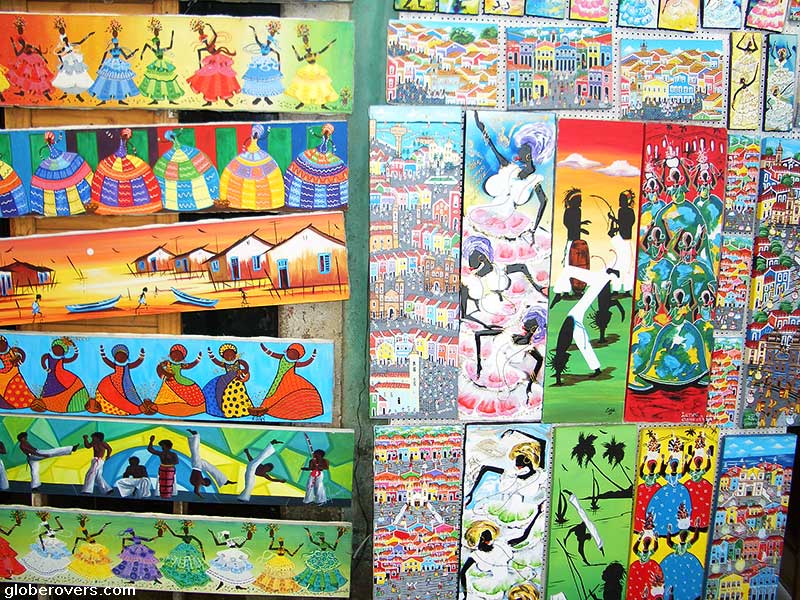
The religion is based on rituals and celebrations that combine the traditions, customs and deities of African paganism, Portuguese Catholicism and even some indigenous beliefs.
Its ceremonies bring alive Afro-Brazilian culture through music and dancing while adherents chant in Yoruba, the West African language used in Candomblé.
Sadly, Bahia also has a poor safety reputation as it has one of the highest crime rates in the country.
Be alert, but don’t let the crime statistics prevent you from visiting one of the world’s most incredible destinations!
Salvador da Bahia
Bahia’s state capital, Salvador, was formerly known as “Cidade do São Salvador da Bahia de Todos os Santos”, which literally means “City of Holy Saviour of All Saints Bay”. Popularly referred to as Salvador da Bahia, it sits on a spit of land separating the Bay of All Saints from the Atlantic Ocean.
The city was founded by the Portuguese in 1549 and served as the very first capital of Brazil. Today Salvador, with a population of about three million people, is regarded as one of the oldest colonial cities in the Americas.
Divided by a sharp escarpment, in places up to 85 metres (279 ft) high, the city consists of the Cidade Baixa (Lower Town) and the Cidade Alta (Upper Town). Since 1873, a 72 metre (236 ft) high elevator with four lifts, known as Elevador Lacerda, connects the two sections of town. The ride from the bottom (Lower Town) to the top (Upper Town) takes 30 seconds and transports about 33,000 passengers each day.
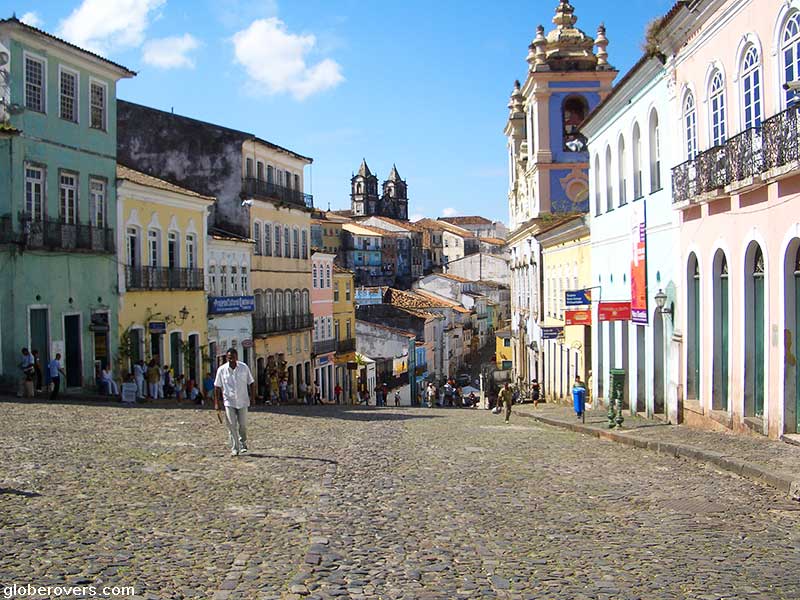
In the Upper Town lies the oldest part of Salvador, the Pelourinho district, which is a UNESCO World Heritage Site. Pelourinho is colourful with one of the finest ensembles of 17th to 18th-century Portuguese colonial architecture in Latin America. Among the highlights are the São Francisco Church, the Pelourinho Cathedral, and the Church of the Third Order of St. Francis.
Salvador is also known as one of the best places to be during the annual Carnival celebration when the city transforms into the largest party in the world. The trio elétrico, an oversized truck piled up with blaring sound equipment and a live band, is the centre of the parade as it slowly rolls down the streets followed by thousands of singing and dancing party-goers!
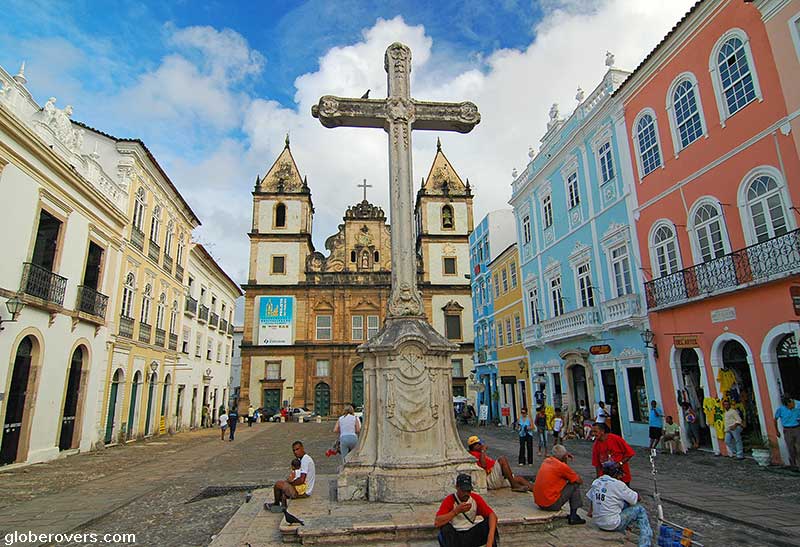
Porto da Barra Beach in Barra, just five kilometres (3.1 mi) south of the old town, has been named one of the best beaches in the country. The beach lies at the entrance of the Baía de Todos os Santos (All Saints Bay), with a white colonial fort at one end and a white church at the other end. This is one of the few beaches in all of Brazil that faces west, so many people come here to see the lovely sunsets over the calm waters of the bay.
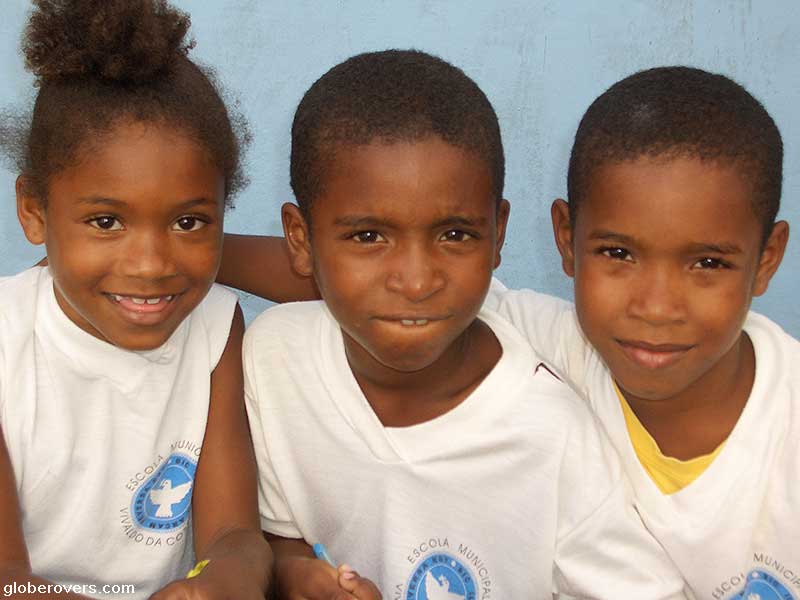
Salvador is also where the Candomblé religion is most fervently practised in all of the Bahia state. During the annual Festa de Iemanja (Festival of Yemanja), devotees dressed in white descend to the beaches to decorate the area with images, light candles, and to perform ceremonies while making offerings to the Goddess of the Sea, Yemanja.
Best of all in Salvador are the many good restaurants offering traditional African-Portuguese food!
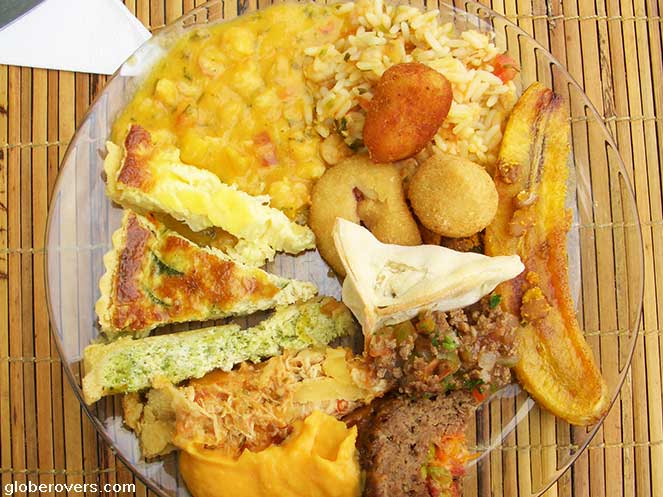
Arraial d’Ajuda
While the coast to the north and the south of Salvador is blessed with many idyllic beaches, let us travel 820 kilometres (509 mi) to Arraial d’Ajuda in the far south of Bahia State.
Sitting atop a bluff, overlooking an enchanting stretch of coastline, Arraial d’Ajuda is a beach-lover’s heaven! This laidback village has an indisputable appeal to locals and foreigners alike.
The village has narrow streets lined with shady trees, with enough pousadas (guesthouses) and open-air restaurants to make every visitor reluctant to ever leave again. Its plazas are surrounded by brightly painted facades.
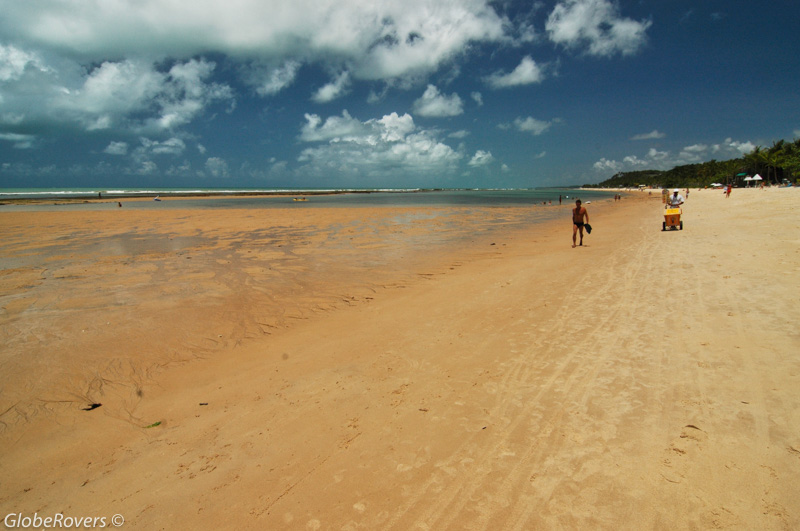
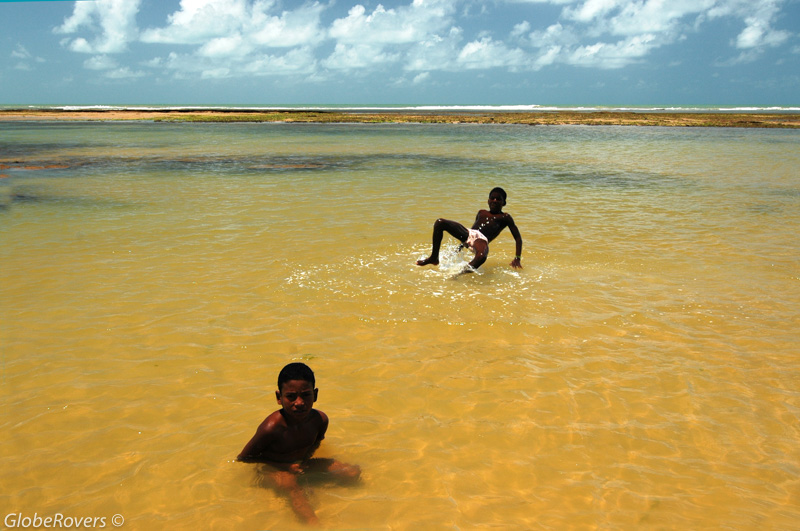
Join the Brazilians, backpackers and nouveau hippies from around the world to spend a few days enjoying the food, drinks, and music of the village. This daily ritual is only interrupted by breaks to do the same down at the nearby beach, known as Praia Mucugê.
This beach is surrounded by palm trees and offers several natural pools with warmish water. The sea here is calm due to a natural barricade provided by offshore coral reefs which break up the large waves. The conditions are ideal for swimming or other water sports. The beach area is lined with barracas (food stalls) serving great food and cold drinks along with loud music which creates an atmosphere of summer beach celebration.
If the sea is not enough, head over to the nearby Arraial d’Ajuda Eco Park, a large water park featuring water slides, canals, and a wave pool. During the summer months, live concerts by famous Brazilian bands entertain the copper-tanned sun-bathers.
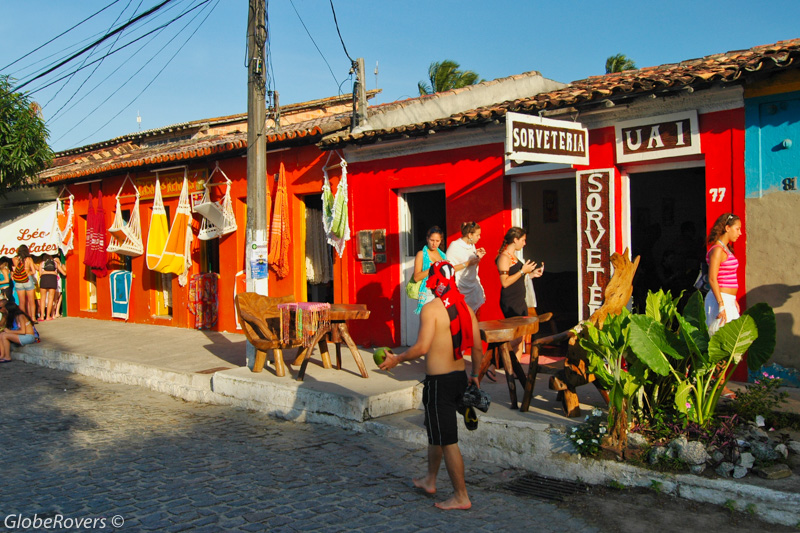
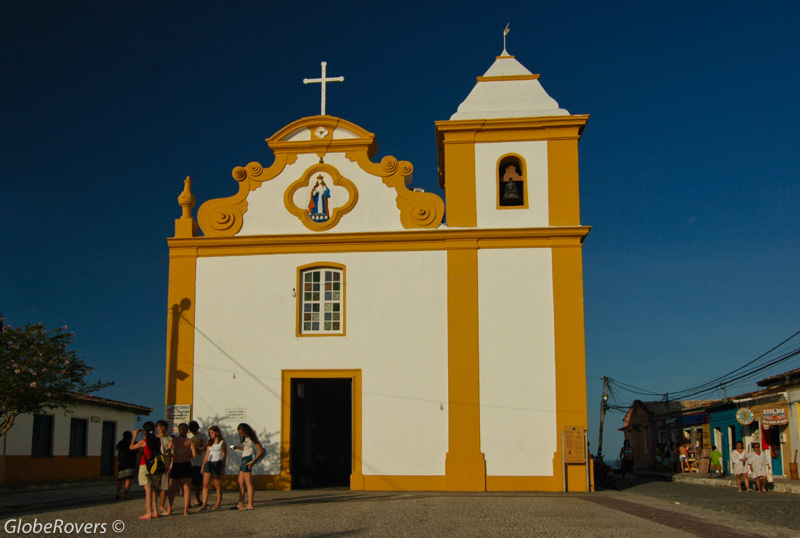
Trancoso & Praia dos Nativos
Almost 30 kilometres (19 mi) south of Arraial d’Ajuda lies the town of Trancoso and its nearby beach, Praia dos Nativos (Natives Beach). Not too long ago Trancoso was just a sleepy fishing village, and while it has retained its laid back atmosphere and charm, it has grown into a big town known for its beaches.
Founded by Portuguese Jesuit Priests in 1583, the village had remained unnoticed until 1999 when a new highway created a link between Trancoso and Porto Seguro, the nearby commercial hub with an airport. Since then its beautiful beaches have attracted an increasing number of local and international beach-lovers.
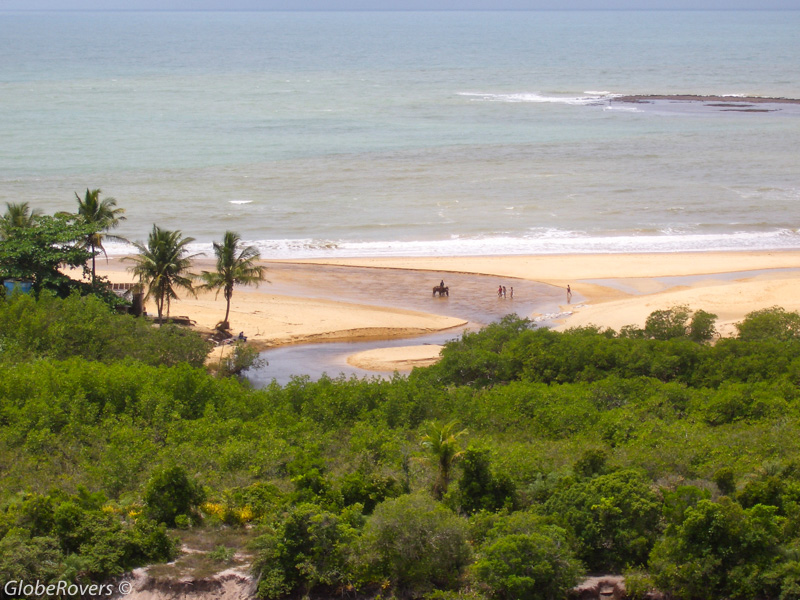

The town has also become popular among North Americans and Europeans who bought property here to serve as their winter getaways. Several celebrities from around the world have luxury holiday homes in the Trancoso area.
Nowadays, Trancoso is described as one of Bahia’s most affluent destinations due to its chic accommodation and beachfront houses. The restaurant scene is equally hip, offering traditional seafood dishes fused with European cuisines.
Even so, Trancoso has maintained its identity with a cool Bahian vibe and a super laid back atmosphere.
The town’s main square, known as the Quadrado, is bordered by colourful houses and a little white church, the Igreja São João de Trancoso, that overlooks the Atlantic Ocean.
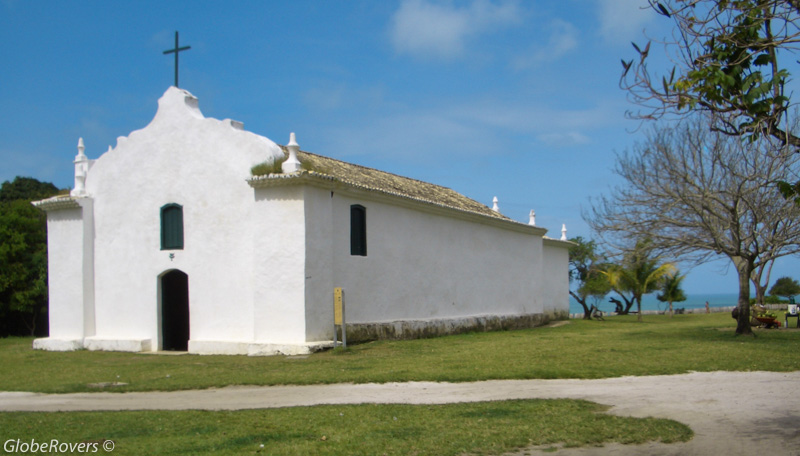
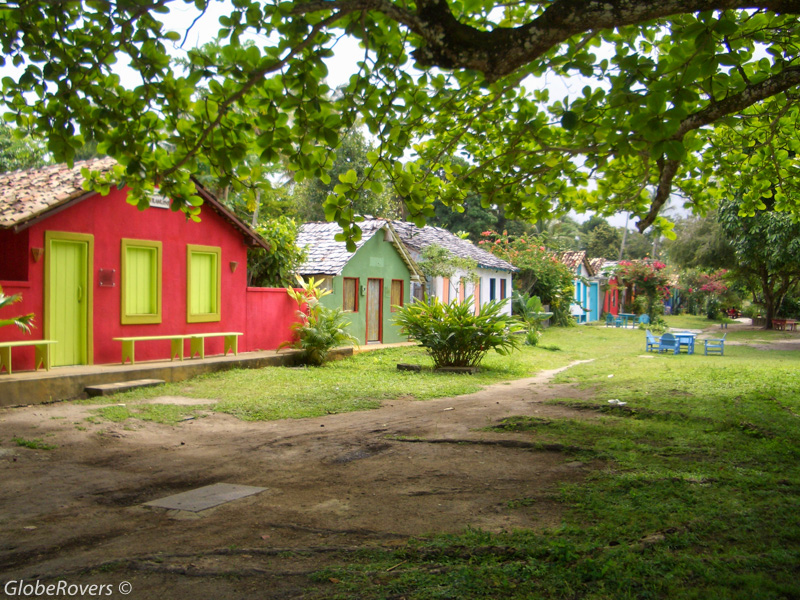
☛ Read more: Posts of South America

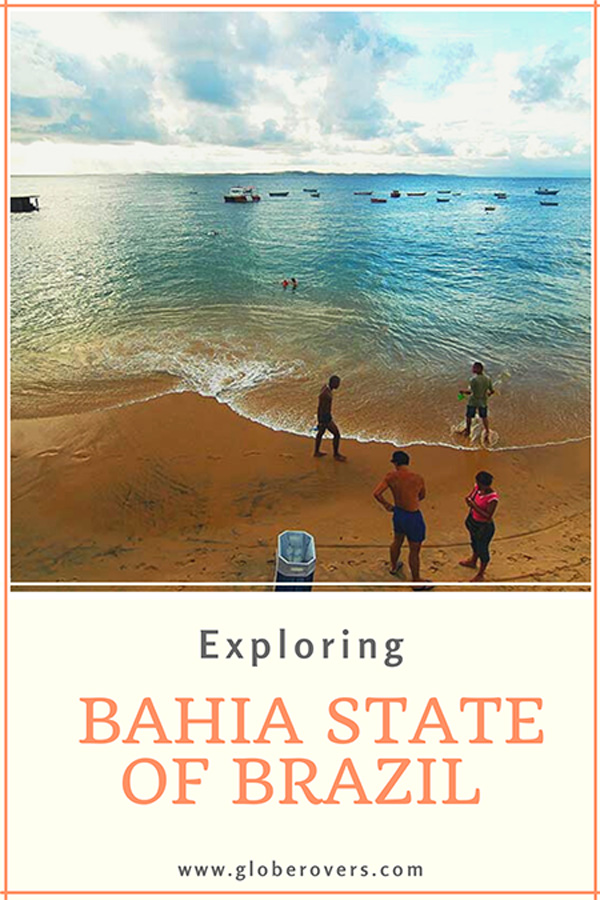

Blog post and photos by Peter who has been travelling almost full-time since 2005 and has been to over 122 countries. He visited several countries, such as Japan, more than 20 times. Peter is Editor-in-Chief and Publisher of GlobeRovers Magazine, an independent travel magazine focused on intrepid destinations.
